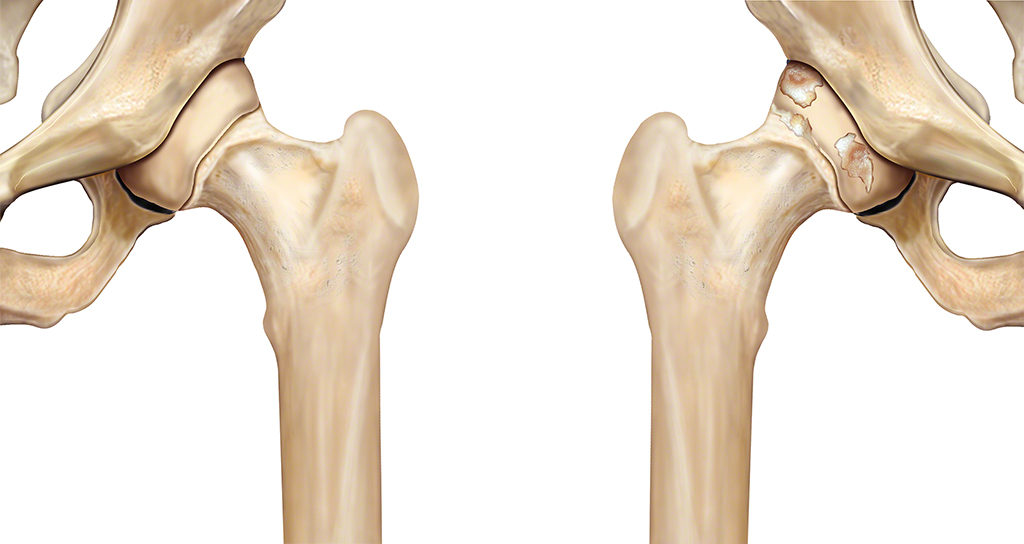Total Hip Replacement
The ball-and-socket hip joint is one of the body’s largest joints and this procedure replaces both the ‘ball,’ (the head of the thighbone), and ‘socket’ (the acetabulum — which his part of the large pelvis bone). In a healthy hip joint, cartilage and a lubricating membrane coats the ball and socket and enables it to move easily. A hip replacement can help with a range of issues, ranging from osteoarthritis and rheumatoid arthritis to avascular necrosis of the femoral head, or even a childhood hip disease causing problems later in life.

Right: A hip with arthritis
The surgery can be performed under regional (awake but numb from the waist down) or general anaesthetic (fully asleep) and typically takes several hours.
It is performed usually through a bikini-type incision that accesses the front of the hip joint ( direct anterior approach) or a posterior approach. There are considerable advantages to the patient by choosing the anterior approach to the hip joint.
We start by removing the ‘ball’ (femoral head) and placing a metal stem into the centre or the femur. A metal or ceramic ball is then placed on top the stem and this becomes your replacement femoral head. We then remove any damaged bone or cartilage that lines the socket and a metal cup is pushed into place, before relocating the newly capped ‘ball’ back into the socket. A small ‘spacer,’ usually made out of medical grade plastic, ceramic, is placed between the ball and the socket to allow for smoother movement.
Hip replacements are usually suggested when medication, walking supports or non-surgical treatment fails to relieve your symptoms. You’ll most likely be able to walk with crutches immediately after surgery and if physical therapy is required, it can usually start within a few days. Depending on your specific circumstances, we may also give you a set of simple exercises to help restore your strength and mobility.
As this surgery involves an incision, you will need to have your stitches or staples removed approximately two weeks after your surgery. This surgery requires a hospital stay of up to four days after which you may need physical therapy or be given a set of simple exercises to help restore your strength and range of motion. Most patients are back to light activities within four to six weeks.
Total Hip Replacement Fast Facts
| Standard Procedure Time: | 1.5 hours |
| Standard Hospital Stay: | 4 nights |
| Recovery Time: | Walking aids for 6 weeks after surgery dependent on progress |
| Return to Light Activities: | 4-6 weeks |
| Return to Full Activities: | 6-12 weeks |